Fragrant and tasty Havana tobacco for lovers of Cuban cigars
Smoking tobacco in cigars is a whole culture of pleasure. Famous personalities of different generations were fans of cigars and knew a lot about them: Sigmund Freud, Mark Twain, Joseph Stalin, Ernesto Che Guevara, Al Capone and many others.
Connoisseurs prefer Cuban tobacco and cigars - they are considered one of the best in the world. The article will focus on the Havana hybrid: we will consider its taste, advantages and disadvantages, growing regions and find out the reason for its popularity.
Havana tobacco variety
This product ranks first among its competitors. The brand is always in trend; the whole world follows its high tobacco quality standard.
Havana is a hybrid of tobacco from the Nicotiana tabacum family, introduced to Cuba from Mexico. In the 19th century it became famous under the name Havanas or Habanos.
Characteristics and aroma
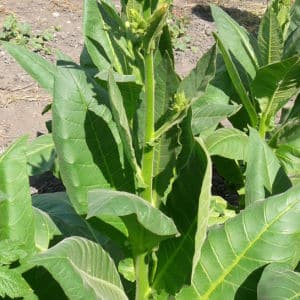
This is standard Cuban tobacco. In addition to Havana, other variants of the smoking mixture were developed.
The strength of tobacco depends on where the plant grows. Havana contains abundant amounts of nicotine, but its organoleptic properties soften the perception and make it safe for humans.
The taste is tart at first, but it is softened and pleasant, smoke with an attractive almond aroma.
Kinds
There are such types of Havana tobacco:
- Havana gold. The name is due to the specific color of the plant - “gold” - when it ripens. Americans love it for its tart and captivating sillage. Used for rolling, making pipe and chewing tobacco.The flowers of the plant are pink, the leaves after drying become brown and elastic.
- Havana classic. Typical black Cuban tobacco. It is highly valued by consumers for its unchanging taste and aroma, which has been formed over centuries.
- Havana-92 - new, disease-resistant tobacco.
- Havana 2000 - tobacco, grown since the end of the 20th century, is used for the cover (shell) of cigars.
- Havana P.R. — the leaf of the plant is used to create the inner and outer frame of a tobacco product.
- Havana Vuelta Arriba - grows in Oriente plantations, in the central districts of Remedios. Used in the production of cigarettes and simple cigars.
Advantages and disadvantages
This product is indispensable for cigar production and as chewing tobacco.
Cigars predate cigarettes and are always wrapped in natural leaf material—no tissue paper is used. This means that when smoking, combustion products do not enter the body. However, residues from processed tobacco remain in the mouth and nasal cavity.
Reference. Smoke is almost equivalent in toxicity to cigarettes and cigarettes, but the sources of intoxication are different.
Like cigarettes, cigars relieve stress and relax. But if cigarettes act this way thanks to nicotine, then smoking a cigar is equated to aromatherapy. Plumes of smoke do not affect the brain, but create a peaceful atmosphere.
It has been observed that cigar fans suffer fewer allergic reactions as the cloud of smoke reduces the effects of histamine.
However, the approach to the consumption process differs from smoking cigarettes. You take the cigar in your hand for a long time and get an exquisite, subtle pleasure. No Havana lover will smoke several pieces in a row.
Ten cigars a month is the norm, which gives a relaxing effect and a memorable pleasant sensation. A larger amount will negatively affect your health.
Growing regions
Havana is demanding on the quality of the soil; in unsuitable soil, the plant will be stunted and will not acquire its advantages. Nowhere does this culture grow better than in its historical homeland. But even here there are select places - the best for growing the plant from which Habanos are made.
Selection and good care are the main rules for obtaining quality leaves.
Havana's habitats are limited to:
- Vegas Finas de Primera - suitable climate and soil.
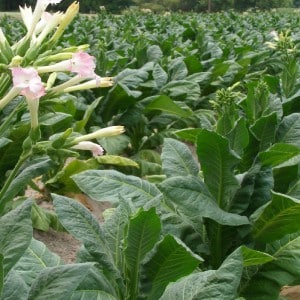
- Vuelta Abajo is a unique area where all types of leaves grow. This site is one of the elite plantations.
- Pinar del Rio, Vizcaino, San Luis are the leading plantations in the western part of the island, famous for their cover leaves.
- Among the most famous plantations are Vega El Corojo and Vega Cuchias de Barbacoa, where the famous estate of the Robaina family is located.
- San Juan y Martinez.
- Semi-Vuelta is a small area in the west of the Cuban island (1% of the area where this crop is cultivated). Unique land for creating seed material.
- Partido arose in the 17th century near the capital. The province is engaged in the cultivation of tobacco cover leaves.
- Havana is the political and financial center of the island. The now famous Havana Bay was where Habanos were originally loaded and shipped to other continents. Everything here remains the same: the famous tobacco factories operate.
- Vuelta Arriba is a region in the east of the country, consisting of two agro-industrial tobacco cultivation areas.
- Remedios is the largest and oldest tobacco production area for two brands - Xoce L.Piedra" and "Guantanamera". Manufacturers are not involved in creating new agricultural technologies; plants are grown using traditional methods.
- Oriente - in this place in the 15th century, the famous navigator H. Columbus tried tobacco and then brought it to Europe.
Growing and care
Havana tobacco is recommended to be grown in seedlings. Seeds are planted in small containers in March. In April-May, when the fifth leaves appear on the sprouts, they are transplanted into greenhouses or open ground. The planting pattern is 90x25 cm.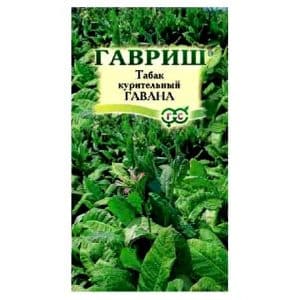
When planting seeds directly into the greenhouse, to distribute them evenly, pour them into a watering can and water the soil. Another way: prepare a mixture of sawdust, dry soil and sand, mix in the seeds and scatter them over the garden bed.
Havana tobacco should be planted in well-drained, sandy soil with a pH of 5.5-7.5. The predecessors of tobacco should not be nightshades - the soil will not be nutritious enough.
The choice of planting site depends on the planned method of using the future tobacco. Havana, grown under the bright sun, is more suitable for filling cigars. Wide, thin and flexible cover sheets grow successfully in the shade with frequent watering.
Havana tobacco is fed three times: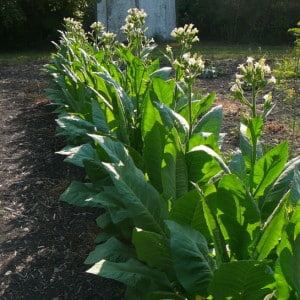
- 7-10 days after planting the seeds - fertilizer with a high nitrogen content (urea solution in water in the ratio of 1 tablespoon per 10 liters);
- 15 days after the first feeding - with complex fertilizer with a high content of potassium and phosphorus;
- 7 days after the second feeding.
From mid-July, after a yellow rim appears on the leaves, they begin harvest tobacco.
Processing Features
The Havana hybrid is characterized by sharpness and strength, due to the specific processing of the leaves of the plant.
Fermentation
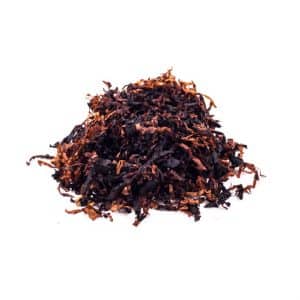
During processing, chemical additional fermentation is used. As a result, the leaves of the plant become brown with a reddish tint.
During fermentation there is an activation of the internal content of the product, the appearance of amino acids and nicotine, a significant change in the structure of resins and essential oils. Consumer qualities improve: tobacco becomes softer when smoking, the bitterness disappears, and the properties of the smoke produced change.
Reviews
People who use tobacco believe that cigars are a product for the elite. Reviews about the Havana hybrid are contradictory.
Irina, Vladivostok: «Havana is now widely used in hookahs. Friends say they like it. I plan to try it too soon.”
Igor, Moscow: “They gave me cigars. It is impossible to smoke them, the taste is terrible - bitter, burnt. My lips were all dirty. The throat burns when you inhale.”
Read also:
Conclusion
Havana is a high-quality tobacco that lovers of Cuban cigars will appreciate: it carries the famous classic taste and unforgettable aroma. It has excellent organoleptic properties. You need to use it according to the rules - then you can happily plunge into an atmosphere of bliss and peace.